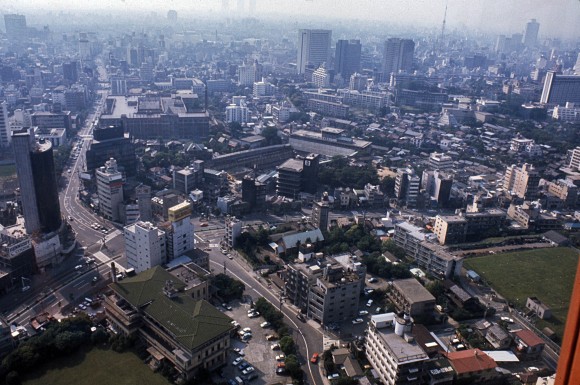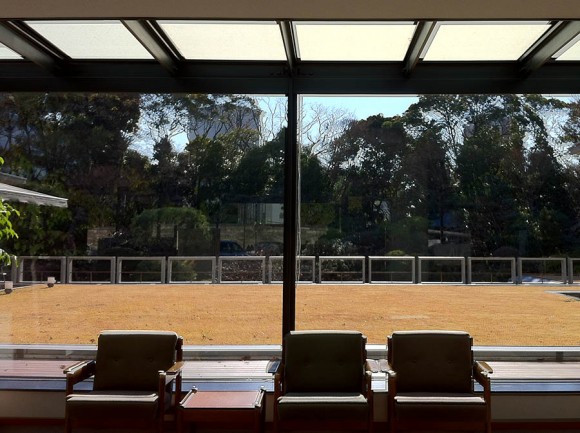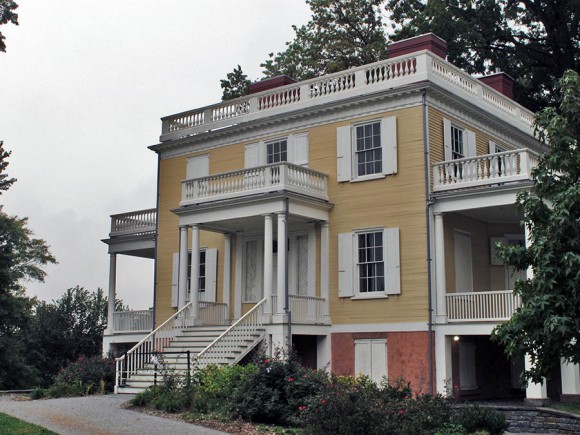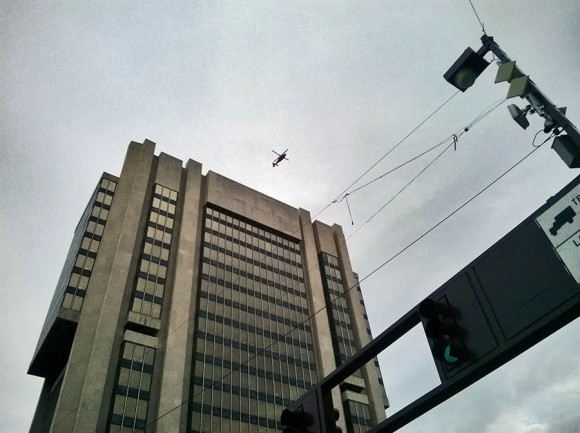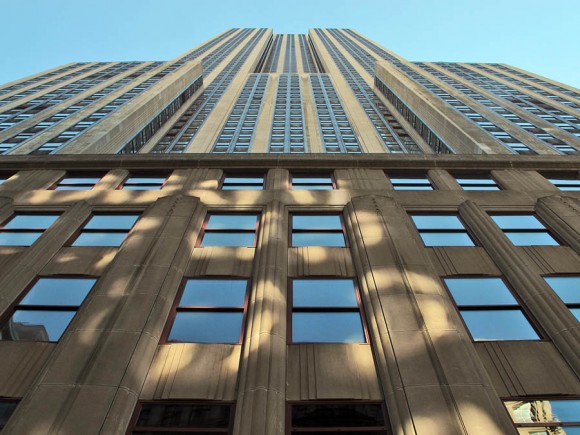The built context of most Tokyo buildings shown on this blog has been radically transformed since their completion several decades ago. It is now almost strange to see these architectural icons stand in their “native” setting or while they were under construction. Thanks to Flickr and Tokyo Tower, we can even have a look further back. 1 December 2013: Update now at bottom of post, 23 February 2014: Another shot at bottom of the post.
Both NOA Building and Reiyukai Shakaden under construction May 1974, photo posted with permission from Flickr user CosmicShip
